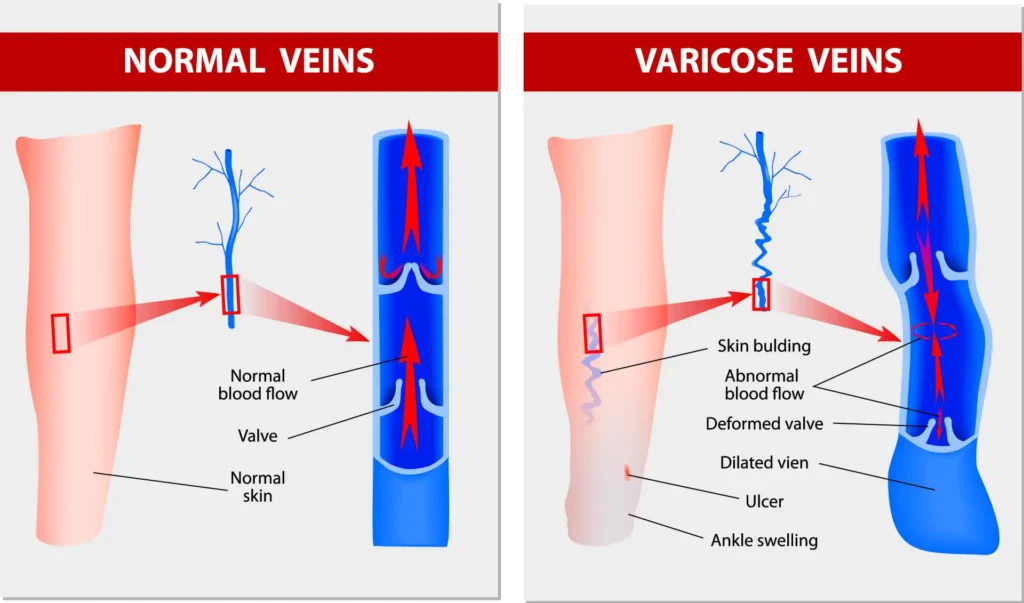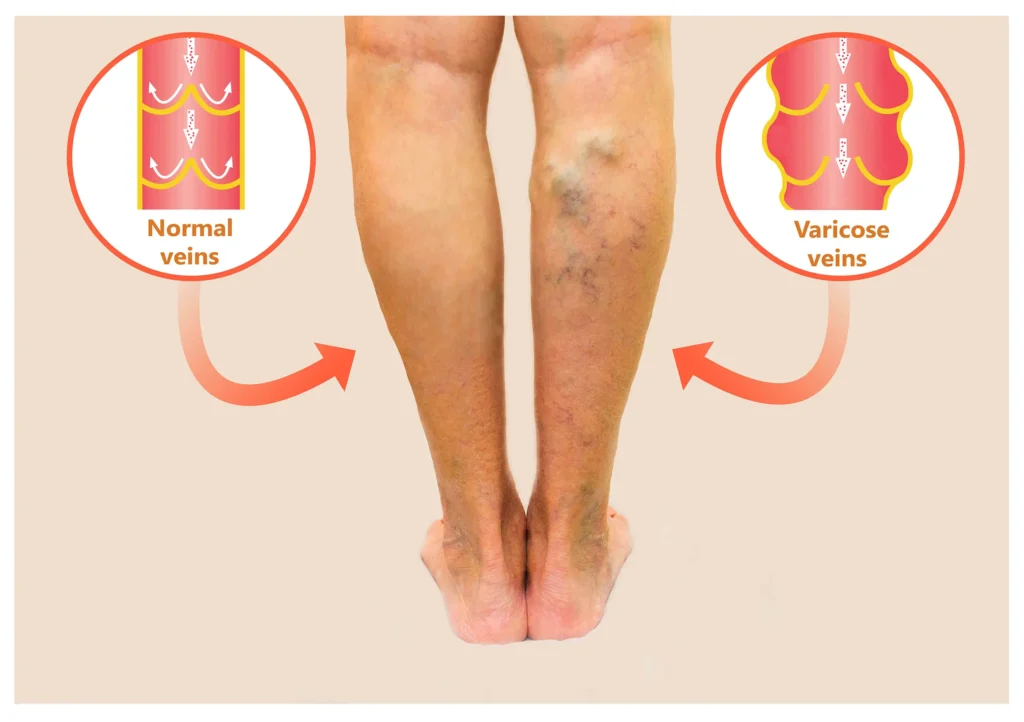What are varicose veins?
Varicose veins are very common, with up to 30% of people having some form of varicose veins in their lifetime.
Veins are the blood vessels that normally return blood to the heart. They do this with a series of valves to ensure one-way flow. In some people, these valves can fail, leading to pressure within the vein. This pressure can lead to stretching and bulging of the vessel and the characteristic ‘varicose’ appearance. Fine web-like veins just under the skin are often referred to as ‘spider veins’.


Varicose veins can cause symptoms of ache, cramp, itch or swelling. These symptoms may be exacerbated with prolonged standing or pregnancy.
The cosmetic appearance of varicose veins may be a concern for many people and a reason to seek treatment. Complications from varicose veins include superficial clots, skin discolouration, bleeding or ulceration.
Investigation of varicose veins involves a clinical assessment and usually an ultrasound scan to confirm the sites of affected veins. Treatment options for varicose veins include medical compression stockings, injections to occlude the veins (sclerotherapy), laser/radiofrequency ablation treatment or surgery.
Removal of the superficial varicose veins will not affect the overall circulation in the leg, as there are many other deep and superficial veins to return the blood.
Dr Lachlan Maddock will make a thorough assessment of any varicose vein issues and can discuss treatment options.